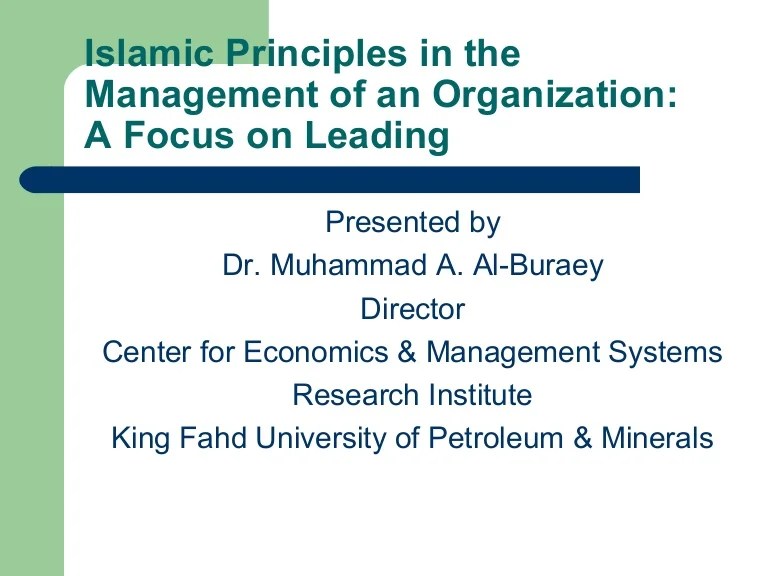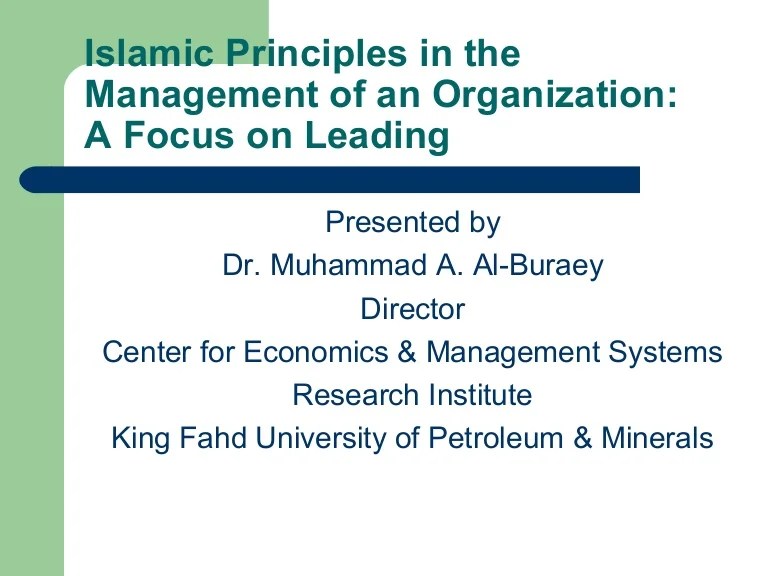Dalam ranah pemikiran Islam, Muhammadiyah memiliki perspektif unik mengenai pengertian organisasi. Organisasi, menurut Muhammadiyah, merupakan sebuah kesatuan yang tersusun dari sekumpulan individu yang bekerja sama secara terstruktur dan terarah untuk mencapai tujuan bersama. Dalam artikel ini, kita akan mengupas tuntas pengertian organisasi menurut Muhammadiyah, meliputi definisi, jenis, elemen, dan aspek penting lainnya.
Konsep organisasi dalam pandangan Muhammadiyah tidak hanya berfokus pada aspek struktural dan administratif, tetapi juga pada nilai-nilai dan prinsip-prinsip etika yang mendasarinya. Bagi Muhammadiyah, organisasi harus menjadi sarana bagi individu untuk mengembangkan potensi diri, berkontribusi kepada masyarakat, dan mewujudkan nilai-nilai luhur Islam.
Definition of Organization
An organization is a social unit of people that is structured and managed to meet a need or purpose. Organizations can be formal or informal, and they can vary in size from a small group of people to a large corporation.
Essential Characteristics of an Organization
There are several essential characteristics that define an organization:
- Goals and Objectives:Organizations have specific goals and objectives that they work towards. These goals may be related to providing a product or service, achieving a social mission, or making a profit.
- Structure:Organizations have a defined structure that Artikels the roles and responsibilities of each member. This structure may be hierarchical, functional, or matrix-based.
- Resources:Organizations have access to resources, such as human capital, financial capital, and physical resources, that they use to achieve their goals.
- Leadership:Organizations have leaders who provide direction and guidance to the members. Leaders may be elected, appointed, or hired.
- Culture:Organizations have a unique culture that shapes the way members interact with each other and with the outside world.
Examples of Organizations
There are many different types of organizations, including:
- Businesses
- Non-profit organizations
- Government agencies
- Educational institutions
- Religious organizations
- Sports teams
- Clubs and associations
Types of Organizations

Organizations can be classified based on various factors, including their purpose, structure, and size. Each type of organization has its unique characteristics and is designed to meet specific objectives.
Classification Based on Purpose
- Non-profit organizations:Focus on social or charitable causes, such as education, healthcare, or environmental protection.
- For-profit organizations:Primarily driven by financial gain and profit maximization.
- Government organizations:Established by government entities to provide public services and enforce laws.
Classification Based on Structure
Organizations can also be classified based on their internal structure:
- Hierarchical:A traditional structure with clear lines of authority and reporting relationships.
- Flat:A more decentralized structure with fewer levels of management and more employee empowerment.
- Matrix:A hybrid structure that combines elements of both hierarchical and flat structures.
Classification Based on Size
Size is another factor used to classify organizations:
- Small:Typically defined as having a limited number of employees and a relatively small budget.
- Medium:Have a larger workforce and budget compared to small organizations.
- Large:Characterized by a significant number of employees, a substantial budget, and a complex organizational structure.
The choice of organizational structure is influenced by several factors, including the organization’s size, industry, and goals. Organizations must carefully consider these factors to select a structure that aligns with their objectives and facilitates efficient operations.
Elements of an Organization
An organization is composed of various elements that work together to achieve its objectives. These elements include individuals, groups, departments, and resources.
Each element plays a specific role and has certain responsibilities within the organization. The alignment and coordination of these elements are crucial for the effective functioning of the organization.
Muhammadiyah’s understanding of organizations emphasizes the importance of unity, cooperation, and effectiveness in achieving common goals. This principle extends to various aspects of life, including the agricultural sector. By understanding the proper techniques and methods for processing harvested crops as outlined in Cara Mengolah Hasil Panen: Teknik Persiapan dan Metode , farmers can maximize the quality and value of their produce.
This, in turn, contributes to the overall success and sustainability of the agricultural industry and aligns with Muhammadiyah’s principles of organizational efficiency and economic empowerment.
Individuals
- The foundation of any organization is its individuals.
- They bring their skills, knowledge, and experience to the organization.
- Individuals are responsible for carrying out the tasks and responsibilities assigned to them.
Groups
Groups are formed when individuals come together to work on a specific task or project.
- Groups can be formal or informal.
- Formal groups are created by the organization and have a defined structure and purpose.
- Informal groups are formed naturally and are not officially recognized by the organization.
Departments
Departments are units within an organization that are responsible for specific functions.
- Departments are typically organized by function, such as marketing, finance, or operations.
- Each department has its own set of goals and objectives.
Resources
Resources are the assets that an organization uses to achieve its objectives.
- Resources can include physical assets, such as buildings and equipment, as well as intangible assets, such as intellectual property and reputation.
- Resources are essential for the effective functioning of an organization.
Organizational Structure

An organizational structure Artikels how certain activities are directed in order to achieve the goals of an organization. It defines the roles, responsibilities, and relationships between different positions within the organization.
There are various types of organizational structures, each with its own advantages and disadvantages. Some common types include:
Functional Structure
In a functional structure, employees are grouped based on their specialized skills and knowledge. This structure is common in organizations that offer a wide range of products or services, as it allows for specialization and expertise in specific areas.
Advantages:
- Promotes specialization and expertise.
- Facilitates efficient resource allocation.
Disadvantages:
- Can lead to communication barriers between different departments.
- May limit career growth opportunities for employees.
Divisional Structure, Pengertian organisasi menurut muhammadiyah
In a divisional structure, the organization is divided into different divisions, each responsible for a specific product, service, or geographic region. This structure is common in large organizations with multiple business units.
Advantages:
- Allows for better focus on specific markets or products.
- Promotes autonomy and decision-making at the divisional level.
Disadvantages:
- Can lead to duplication of resources across divisions.
- May create competition between divisions.
Matrix Structure
In a matrix structure, employees report to both a functional manager and a project manager. This structure is often used in organizations that need to balance functional expertise with project-specific requirements.
Advantages:
- Combines the benefits of functional and divisional structures.
- Facilitates cross-functional collaboration.
Disadvantages:
- Can be complex and challenging to manage.
- May lead to role conflicts and ambiguity.
Examples of Organizational Structures
The choice of organizational structure depends on various factors such as the size, industry, and business goals of the organization. Here are some examples of organizational structures in different industries:
- Functional Structure:A manufacturing company may have departments for production, marketing, finance, and human resources.
- Divisional Structure:A multinational corporation may have divisions for different geographic regions or product lines.
- Matrix Structure:A consulting firm may have functional groups for different areas of expertise (e.g., strategy, finance, technology) and project teams for specific client engagements.
Organizational Culture
Organizational culture refers to the shared values, beliefs, norms, and practices that characterize an organization. It is the invisible fabric that shapes the way employees interact with each other, make decisions, and conduct business. Organizational culture has a significant impact on employee behavior and performance, influencing factors such as motivation, job satisfaction, and productivity.
Factors Influencing Organizational Culture
Several factors influence the development of organizational culture, including:
- Leadership:Leaders play a crucial role in shaping the culture of an organization. Their values, beliefs, and behaviors set the tone for the rest of the organization.
- Industry and Environment:The industry in which an organization operates and the external environment it faces can influence its culture. For example, organizations in fast-paced, competitive industries may develop a culture that emphasizes innovation and risk-taking.
- History and Tradition:The history and tradition of an organization can shape its culture. Organizations with a long history may have a strong sense of identity and shared values.
- Employees:The employees of an organization are the ones who ultimately live and breathe the culture. Their values, beliefs, and behaviors contribute to the overall culture of the organization.
Impact of Organizational Culture on Employee Behavior and Performance
Organizational culture has a significant impact on employee behavior and performance. A positive culture can lead to increased employee motivation, job satisfaction, and productivity. Employees who feel valued and supported by their organization are more likely to be engaged and productive.
On the other hand, a negative culture can lead to decreased employee motivation, job dissatisfaction, and low productivity. Employees who feel undervalued or unsupported by their organization are less likely to be engaged and productive.
Organizational culture is a complex and multifaceted phenomenon. It is shaped by a variety of factors and has a significant impact on employee behavior and performance. By understanding and managing organizational culture, organizations can create a positive work environment that fosters employee engagement, productivity, and success.
Organizational Goals
Organizational goals are the objectives that an organization strives to achieve. They provide direction and focus for the organization’s activities and help ensure that everyone is working towards the same common purpose.
There are many different ways to set organizational goals, but some common methods include:
- Using a strategic planning process to identify the organization’s mission, vision, and values.
- Conducting a needs assessment to identify the organization’s strengths and weaknesses.
- Setting goals that are SMART (specific, measurable, achievable, relevant, and time-bound).
Once organizational goals have been set, it is important to align them with the organization’s activities and resources. This can be done by:
- Creating a strategic plan that Artikels the steps that need to be taken to achieve the goals.
- Developing a budget that allocates resources to the activities that will help achieve the goals.
- Establishing performance metrics to track progress towards the goals.
Stakeholders play an important role in goal setting. They can provide input on the organization’s mission, vision, and values. They can also help identify the organization’s strengths and weaknesses. By involving stakeholders in the goal-setting process, organizations can increase the likelihood that the goals are achievable and that everyone is committed to working towards them.
Organizational Processes
Within an organization, a multitude of processes occur, shaping its daily operations and long-term trajectory. Understanding these processes is crucial for optimizing organizational efficiency, effectiveness, and overall performance.
Organizational processes encompass a wide range of activities, including strategic planning, resource allocation, decision-making, communication, and performance evaluation. Each process contributes to the smooth functioning of the organization, ensuring that goals are met and objectives are achieved.
Importance of Optimizing Organizational Processes
Optimizing organizational processes brings forth a plethora of benefits, including:
- Increased efficiency:Streamlined processes reduce time wastage, improve coordination, and enhance productivity.
- Enhanced effectiveness:Optimized processes ensure that resources are utilized effectively, leading to better outcomes and higher levels of performance.
- Improved decision-making:Clear and well-defined processes provide a structured framework for making informed decisions, minimizing errors and enhancing overall decision quality.
- Greater transparency:Optimized processes promote transparency, allowing stakeholders to understand how decisions are made and resources are allocated.
- Increased agility:Flexible and adaptable processes enable organizations to respond swiftly to changes in the external environment, maintaining a competitive edge.
Role of Technology in Streamlining Organizational Processes
Technology plays a pivotal role in streamlining organizational processes, offering a range of tools and solutions that can:
- Automate repetitive tasks:Technology can automate mundane and repetitive tasks, freeing up employees to focus on more strategic and value-added activities.
- Improve communication and collaboration:Collaboration platforms, instant messaging, and video conferencing tools facilitate seamless communication and knowledge sharing among team members, regardless of their location.
- Enhance data analysis:Data analytics tools enable organizations to collect, analyze, and interpret data, providing valuable insights into process performance and areas for improvement.
- Monitor and track progress:Process monitoring tools provide real-time visibility into process performance, allowing managers to identify bottlenecks and make necessary adjustments.
- Promote innovation:Technology can foster innovation by providing access to new tools and technologies that can enhance process efficiency and effectiveness.
Organizational Communication
Effective organizational communication is the cornerstone of any successful organization. It enables the seamless flow of information, ideas, and decisions, fostering collaboration, knowledge sharing, and overall organizational success.
Channels and Methods of Communication
Organizations utilize a wide range of channels and methods to facilitate communication, both formal and informal. Formal channels include official meetings, emails, memos, and reports. Informal channels, on the other hand, encompass conversations, social media platforms, and instant messaging.
Fostering Collaboration and Knowledge Sharing
Communication plays a pivotal role in fostering collaboration and knowledge sharing within an organization. When employees can effectively communicate their ideas and insights, it leads to a collective pool of knowledge that can be leveraged for innovation and problem-solving.
Organizational Change: Pengertian Organisasi Menurut Muhammadiyah
Organizational change refers to the process of altering an organization’s structure, culture, or processes to adapt to new circumstances or improve performance. It involves making significant adjustments to the way the organization operates, including its goals, strategies, and systems. Organizational change can be planned or unplanned, and it can range from minor tweaks to major transformations.
Factors Driving Organizational Change
Several factors can drive organizational change, including:
- Environmental changes:Changes in the external environment, such as new technologies, increased competition, or shifts in customer preferences, can necessitate organizational change to remain competitive.
- Internal changes:Changes within the organization, such as new leadership, changes in workforce demographics, or the need for cost reduction, can also trigger organizational change.
- Strategic decisions:Organizations may initiate change to pursue new opportunities, improve efficiency, or respond to market trends.
Types of Organizational Change
There are various types of organizational change, each with its own implications:
- Incremental change:Gradual, small-scale changes that occur over time and do not significantly disrupt the organization’s overall structure or processes.
- Radical change:Major, transformative changes that significantly alter the organization’s structure, culture, or processes.
- Planned change:Change that is initiated and managed by the organization’s leadership, following a specific plan and timeline.
- Unplanned change:Change that occurs unexpectedly or as a result of unforeseen circumstances.
Organizational Effectiveness

Organizational effectiveness refers to the ability of an organization to achieve its goals and objectives. It is a measure of how well an organization is performing in relation to its mission, vision, and strategic plan.
In the context of Muhammadiyah’s understanding of organizations, the concept of self-discipline and spiritual development plays a crucial role. This aligns with the teachings of Islam, which emphasize the importance of remembrance (zikir) as a means of purifying the heart and strengthening one’s connection with God.
For those seeking guidance on the proper way to perform zikir, a comprehensive guide can be found at Cara Berzikir Sesuai Ketentuan: Panduan Lengkap . By incorporating the principles of zikir into organizational life, Muhammadiyah aims to foster a culture of ethical conduct, unity, and spiritual growth among its members.
Organizational effectiveness is important because it can impact an organization’s success, profitability, and sustainability. An effective organization is able to adapt to change, meet the needs of its customers, and achieve its goals.
Measures of Organizational Effectiveness
There are a number of different ways to measure organizational effectiveness. Some common measures include:
- Financial performance: This includes measures such as profitability, revenue, and return on investment.
- Customer satisfaction: This includes measures such as customer loyalty, satisfaction, and retention.
- Employee satisfaction: This includes measures such as employee morale, engagement, and productivity.
- Operational efficiency: This includes measures such as productivity, efficiency, and cost-effectiveness.
Factors Contributing to Organizational Effectiveness
There are a number of factors that can contribute to organizational effectiveness. Some of the most important factors include:
- Clear goals and objectives: An organization needs to have clear goals and objectives in order to be effective. These goals and objectives should be aligned with the organization’s mission, vision, and strategic plan.
- Strong leadership: Effective organizations have strong leaders who are able to motivate and inspire their employees. These leaders are able to create a positive work environment and foster a culture of innovation and collaboration.
- Effective communication: Effective organizations have effective communication systems that allow information to flow freely between all levels of the organization. This communication is essential for ensuring that everyone is on the same page and working towards the same goals.
- Empowered employees: Effective organizations empower their employees to make decisions and take risks. This empowerment can lead to increased creativity, innovation, and productivity.
- Continuous improvement: Effective organizations are constantly looking for ways to improve their performance. This includes investing in new technologies, training employees, and implementing new processes.
Organizational Sustainability
Organizational sustainability refers to the ability of an organization to operate in a manner that meets the needs of the present without compromising the ability of future generations to meet their own needs. It encompasses environmental, social, and economic dimensions, and organizations can implement various strategies and practices to promote sustainability.
Environmental Sustainability
Environmental sustainability focuses on minimizing the negative impact of an organization’s activities on the natural environment. This includes reducing greenhouse gas emissions, conserving resources, and protecting biodiversity. Strategies for promoting environmental sustainability include:
- Using renewable energy sources
- Improving energy efficiency
- Reducing waste and promoting recycling
- Adopting sustainable procurement practices
Social Sustainability
Social sustainability focuses on the well-being of an organization’s employees, customers, and the community in which it operates. This includes ensuring fair labor practices, promoting diversity and inclusion, and supporting local initiatives. Strategies for promoting social sustainability include:
- Providing competitive wages and benefits
- Creating a positive and inclusive work environment
- Supporting employee development and well-being
- Engaging with the community and supporting local initiatives
Economic Sustainability
Economic sustainability focuses on the long-term financial health and stability of an organization. This includes generating sufficient revenue, managing expenses effectively, and investing in future growth. Strategies for promoting economic sustainability include:
- Developing a sustainable business model
- Diversifying revenue streams
- Investing in research and development
- Managing risk and financial planning
Conclusion
Pengertian organisasi menurut Muhammadiyah tidak hanya memberikan kerangka teoritis, tetapi juga panduan praktis bagi pengelolaan organisasi yang efektif dan bermakna. Dengan memahami konsep ini, organisasi dapat menjalankan fungsinya secara optimal, berkontribusi positif bagi lingkungan sosial, dan menjadi pilar utama dalam pembangunan masyarakat yang lebih sejahtera dan berkemajuan.
FAQs
Apa tujuan utama organisasi menurut Muhammadiyah?
Tujuan utama organisasi menurut Muhammadiyah adalah untuk mewujudkan nilai-nilai luhur Islam, mengembangkan potensi individu, dan berkontribusi kepada kemajuan masyarakat.
Apa saja prinsip-prinsip dasar organisasi menurut Muhammadiyah?
Prinsip-prinsip dasar organisasi menurut Muhammadiyah meliputi musyawarah, transparansi, akuntabilitas, dan keadilan.
Bagaimana peran pemimpin dalam organisasi menurut Muhammadiyah?
Pemimpin dalam organisasi menurut Muhammadiyah harus menjadi teladan, melayani anggota, dan mengutamakan kepentingan bersama.

